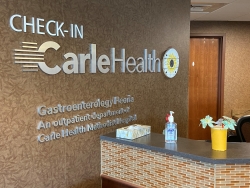The use of artificial intelligence (AI) is rapidly expanding to increase productivity and quality in both personal...
As healthcare organizations look to the future, they cannot overlook the need to place the consumer at...
Hospital: Cedars-Sinai is based in Beverly Grove. L.A. County health care research institutions were awarded approximately $12.5...
Even the most routine medical appointment can be stressful for patients. Now imagine that you can’t hear...
The annual Africa Health congress has become a dynamic hub for healthcare innovation and thought leadership across...
Image by Dim Hou from Pixabay
Press release issued:
16 April 2024 People who...
Carle Health is committed to serving the ever-evolving needs of patients and is pleased to welcome Carle...
The academic health system was recognized for the creation of the Tampa Medical and Research District and...
Physician practice ownership by corporations, including health insurers, private equity firms, and large pharmacy chains, reached 30.1%...
World Health Day, marked annually on April 7, serves as an important platform to shed light on...








